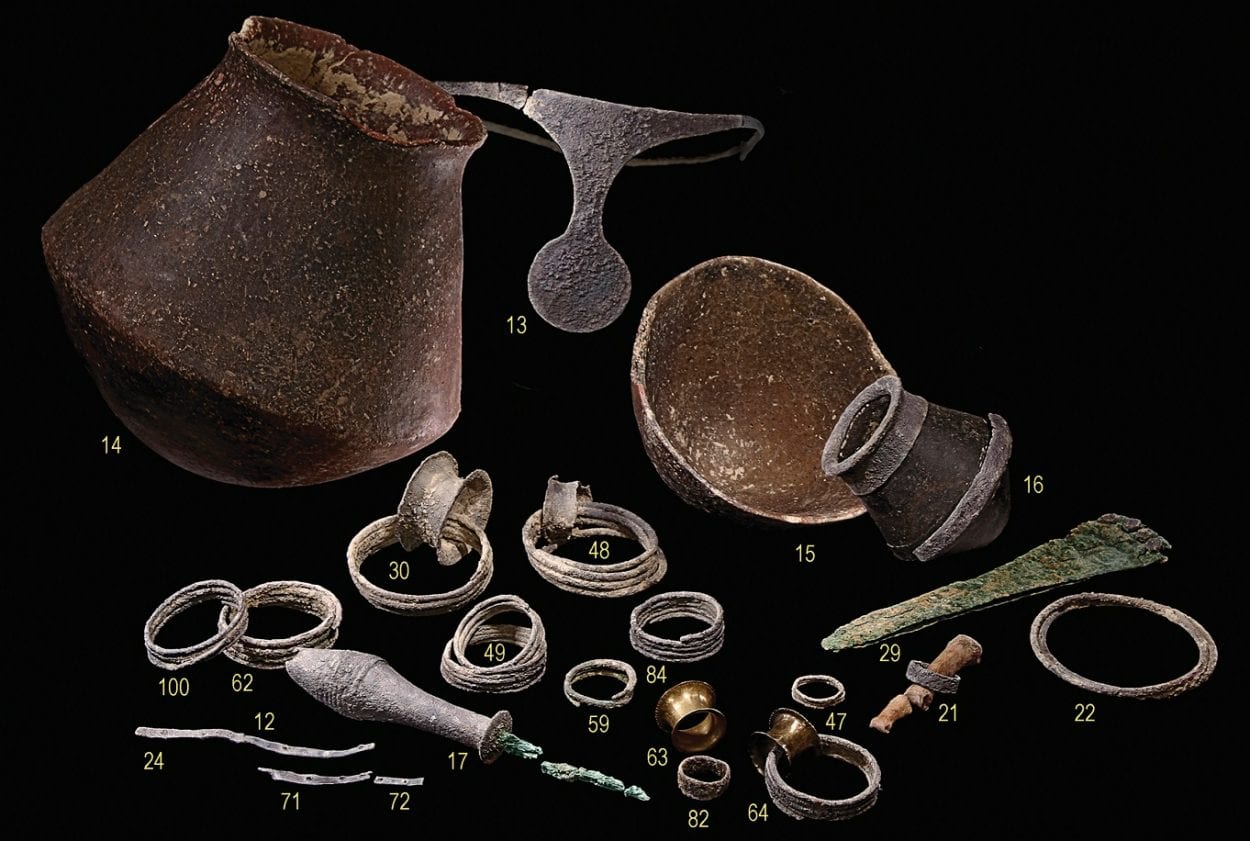Archaeologists working in Spain have discovered a female burial that is one of the most lavish Bronze Age graves ever found in Europe, with valuable items befitting a member of the ruling class, beneath what may be the first Bronze Age palace unearthed in the region.
This discovery was made in 2014 at the site of La Almoloya in Murcia, which belonged to the Bronze Age El Argar society that flourished from 2200 – 1550 BC in the south-east of Iberia.
The burial itself, reported in the journal Antiquity, is located in a large jar found beneath the floor of a room. It features a female, aged 25–30, and male, 35–40, who died close together in the mid-17th century BC. Genetic analysis suggests they had offspring together, including a daughter who is buried elsewhere on the site.
Both the male and female were buried with a range of valuable and prestigious objects. The male had a copper bracelet, silver fasteners likely for braids, and golden earlobe plugs. However, most of the items were associated with the female, including silver bracelets, rings, and a rare silver Argaric diadem which they were still wearing.
These diadems were crown-like items made from precious metals and included amongst other valuable items in the burials of select females. Their rarity, value, and prominence when worn suggests they were highly symbolic, identifying someone as powerful and important.

“These grave goods has allowed us to grasp the economic and political power of this individual and the dominant class to which they belonged,” the researchers said. This link to governance is also reflected in the site of La Almoloya itself. The burial was found beneath a room in a large building complex that appears to have fulfilled both residential and political functions, including one room with benches laid out as though for meetings.
As such, this site appears to be a palace, where the ruling class both lives and carries out their business. This would make it the first found in Bronze Age Western Europe – until it was destroyed by a fire shortly after the female individual was interred.
The first palace would just be one of many innovations made by the El Argar society. They were one of the first groups in the region to utilise bronze, developed complex urban centres with monumental structures, and appear to have had a highly stratified society based on the variation in wealth found in graves.
With the most lavish grave yet found, the female from La Almoloya may have sat at the top of this hierarchy, although her exact role is one of many questions about the site, and those buried there, yet to be answered.
“The La Almoloya discoveries have revealed unexpected political dimensions of the highly stratified El Argar society,” the researchers conclude. Find out more
Header Image Credit : Antiquity







